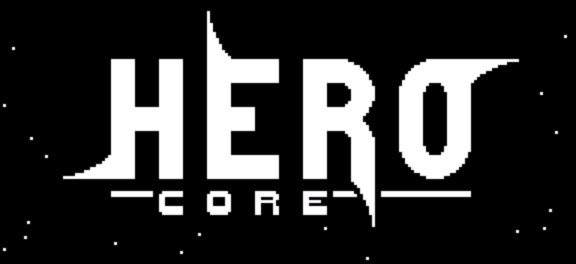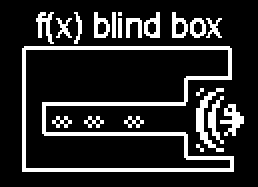Sunday
Dec262010
Herocore Sample
 Sunday, December 26, 2010 at 4:31PM
Sunday, December 26, 2010 at 4:31PM Herocore, by Swedish indie developer Daniel Remar, is a Metroid style SHMUP (shoot 'em up) that has earned a place on my favorite SHMUPs of all time along side Defeat Me, Bangai-O Spirits, Ikaruga, Geometry Wars, and Everyday Shooter. This game is so jam packed with game design goodness, I feel that I have to limit my analysis somewhat to make this article more accessible. Like scientists examining ice cores out of the artic, we'll work our way through this game layer by layer.

Controls
- The controls were a bit odd at first, but they fit the gameplay. Z and X control left and right FIRE respectively allowing the player to move and shoot independently. Another interesting feature is the rapid fire toggle. I play with it on and use the charge BLADE attack to limit my fire power.
- The majority of the gameplay is as simple as move and shoot. Featuring 2D top down space (no gravity) the enemy elements use homing attacks as well as shear numbers to challenge the player (contrary motion). Some rooms have corridors to help funnel the action, but most are open.
- SHMUP action is essentially shooting (which includes aiming) and dodging. In Herocore, to further influence players to take careful aim, Flip Hero (the player character) is designed with balanced attack ranges, movement speed, and f(x) blind spots. Because you can only shoot left/right and and the BLADE is a close range attack, you have to move a lot to hit targets (just like in Mega Man). Any target within the f(x) blind box is a threat (see image below). To better understand these design choices, we need to consider player skill.

Anything within the box, you'll have to move to hit.
DKART Skills
- Dexterity: This facet of Herocore's skill specturm is simple. To FIRE quickly, one must use speed skills to rapidly hit the FIRE buttons. The faster you fire, the more stamina comes into play. Fortunately, there's an autofire option to minimize the need for these skills. However, the autofire fires slightly less bullets per second than some of the quickest button mashers.
- Timing & Reflex: In Herocore these two facets of skill are tied together. Because your bullets travel fairly slowly, the dynamic of space really comes into play. The closer you are to a target the shorter the bullet travel distance. At close range, leading shots is completely unnecessary. Also at close range, you have to use more reflex skills to track enemy movements and incoming enemy elements. Conversely, the farther away you are, the greater the bullet travel time. To hit moving targets from far away you must aim and shoot ahead of the target so they run into your bullets. This is an example of complex timing. The more irregular the enemy movement patterns and the farther away they are, the more complex the timing becomes. The benefit of fighting at long range is increased safety due to an increased reaction time window.
- Knowledge: There are not a lot of complexities to learn in Herocore compared to other SHMPS. There are a few challenges with very scripted sequences that can be memorized. For the majority of the game, instead of memorizing sequences and patterns, the challenges are emergent, which brings the examination to enemy design.
Enemy Design/Boss
- Most of the enemies are fairly simple in their movement and shooting patterns. Knowing when enemies will fire, what they shoot, and how they move will allow you to slip through bullet storms unharmed while maximizing your offense. There's enough design space touched by the enemies that each of the 190 or so rooms offer unique emergent challenges. The same goes for the bosses.
- To be a bit reductive, a SHMUP is a genre where you only have to dodge around while shooting to win. One of the most unique experiences of playing a SHMUP is reading and maneuvering around complex patterns of enemy elements. The slower the bullets and the larger the screen the greater the potential effect. Sure, one may only need to hit left-right-left-down-right to get through a bullet field, but figuring out this maneuver from an interweaving spread of bullets is highly engaging. Herocore creates emergent SHMUP action from just a handful of enemies and very large f(x) blind spots.

Compare this more detailed map to the mini map below.
Level/World Design
- Metroid style games are essentially open world games. We commonly use the terms like "metroidvania" as labels for large 2D games and "open world" for 3D.
- Backtracking? From the outset players have the ability to teleport to any previously visited save station. This mechanic virtually eliminates any backtracking. It's obvious that the bigger a world gets, the more backtracking becomes a serious drawback. Even the Zelda series has featured some kind of teleporting mechanic since the NES.
 The bigger picture? Also from the beginning of the game, you're presented with a mini map of the entire game world (see image right). At a glance you know the rough layout of the world and where you are, which is helpful for understanding the organic unity. Even with the Gameboy like visuals (which I love), it's easy to pick up on the transitions between rocky caves to the technological space station. You can follow the liquid metal "rivers" as they flow from the top of the world to the bottom where it's refined to make enemy robots. The resolution may be low, but the attention to detail is very high. And if you don't pick up on the visual cues, the music should do the trick.
The bigger picture? Also from the beginning of the game, you're presented with a mini map of the entire game world (see image right). At a glance you know the rough layout of the world and where you are, which is helpful for understanding the organic unity. Even with the Gameboy like visuals (which I love), it's easy to pick up on the transitions between rocky caves to the technological space station. You can follow the liquid metal "rivers" as they flow from the top of the world to the bottom where it's refined to make enemy robots. The resolution may be low, but the attention to detail is very high. And if you don't pick up on the visual cues, the music should do the trick.
Progression/ Sequence Breaking/ Speed Running
- All three of the above topics are related. After all, breaking a sequence or speeding through a game is based on whatever the main/core sequence is in the first place.
- To start, I must describe Herocore's progression, which requires looking at both the ways the game is designed to restrict or lock out the player and the ways the game guides the player to the "main path."
- Much of Herocore's world is open. Like Metroid, each room tends to be populated with enemies that repawn each time you enter. Killing the enemies in most of these encounters is completely optional. Though you level up, enemies don't give you any experience; so there's never the reluctant urge to kill everything. There are a few powerup locks and defeat-all-enemies gates to restrict progression.
- To simplify a bit, in Herocore you're free to fight the bosses (including the final boss) and discover new areas in any order. Still, there is an "order" to the progression/bosses based on difficulty level marked by "?" marks on the map. We can consider this order as the normal sequence of progression.
- There's a reason why Herocore works so well as a sequence breakable game. Recall this article I wrote about Super Metroid sequence breaking. Herocore features nearly all of the design design features I outline that facilitate sequence breaking.
- There are no artificial restrictions (that I know of).
- There are powerup locks (materials that can only be destroyed with the BLADE ability).
- There are no folds in the level design mainly because of the TELEPORT mechanic. But space is highly compressed as areas connect to each other via multiple pathways.
- The normal sequence doesn't require any advanced/nuanced techniques. Yet, it's possible to use the EXPEL attack to bypass certain powerups locks (see video linked below).
- As far as the balance of mandatory events, nothing is mandatory but beating the final boss.
- For the same design reasons Herocore supports sequence breaking it also supports significant speed runs. On my first play through I clocked in about 2 hours. Compare this to Daniel Remar's speed run done in 2 minutes and 37 seconds. Wow.
Difficulty
- This topic is actually quite complex for Herocore. If you take the normal path of progression, you'll fight all the bosses when you're at a suitable level. If you forge your own path, you might encounter enemies or a few bosses that are stronger than they "ought" to be. The same freedom of progression complicates understanding Herocore's difficulty. Still, players should know that if an area is inaccessible due to locks or difficult challenges, they always have the option to explore other areas. This is true for Herocore and many other non-linear games.
- After I beat the game I discovered options in the menu that affect difficulty. Apparently there's an option to turn off the auto-map so that players must draw their own maps to keep track of the environment. Also, there an option to turn off the indicator that tells you where the next boss is according to normal sequence of progression. There's a good reason why these options are on by default. Turning off the map and not indicating which boss to fight next doesn't make Herocore more difficult in terms of SHMUP action. It'll only make you more likely to get lost or to do more backtracking, thus undermining the effect of the save-point-teleportation. Though "hardcore" I do not suggest adjusting these options from their default settings.
- Then there's a hard mode featuring a new map, tweaked enemies, and deadlier bosses. After beating the normal game, earning an A rank on boss rush (normal), and reaching level 8 with 43 flags in the Hero Forever mode, this hard mode was just the challenge I was looking for.
There's more Herocore design goodness that I didn't touch on. I tried to outline the core design without many spoilers so you can enjoy it for yourself. Though the core gameplay is simple, the overall design is quite excellent.

